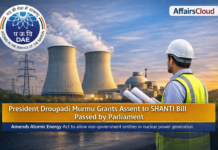 According to data released by MoPNG’s (Ministry of Petroleum & Natural Gas) Petroleum Planning and Analysis Cell (PPAC), India’s fuel demand declined by 9.1% in FY 2020-21 due to nationwide lockdown caused by COVID-19. It is the first time since 1998-99 that India has registered a decline in fuel consumption.
According to data released by MoPNG’s (Ministry of Petroleum & Natural Gas) Petroleum Planning and Analysis Cell (PPAC), India’s fuel demand declined by 9.1% in FY 2020-21 due to nationwide lockdown caused by COVID-19. It is the first time since 1998-99 that India has registered a decline in fuel consumption.
- India consumed 194.63 Million Tonnes of Petroleum Products in 2020-21 compared to 214.12 Million Tonnes in 2019-20.
- The demand Contraction was led by Diesel (India’s most consumed fuel). Diesel consumption fell 12% to 72.72 Million Tonnes while Petrol demand fell by 6.7% to 27.95 Million Tonnes.
- India’s GDP is estimated to have contracted by 7-8% in FY 2020-21.
LPG registers Growth
- Domestic Cooking Gas LPG (Liquefied Petroleum Gas) was the only retail fuel that registered growth. Its demand rose by 4.7% to 27.59 Million Tonnes from 26.33 Million Tonnes in 2019-20.
- LPG is a mixture of Butane & Propane, along with ‘Ethyl Mercaptan’, which provides a pungent smell to LPG.
- The rise in consumption is attributed to the fact that free cylinders were distributed by Government to the poor as COVID-19 relief.
- The Central Government provided Free LPG cylinder to over 8 Crore beneficiaries under Pradhan Mantri Ujjwala Yojana (PMUY) which was launched by PM Narendra Modi in 2016.
Case of other Petroleum Products
- Consumption of Aviation Turbine Fuel (also known as Jet Fuel) fell 53.6% to 3.7 Million Tonnes.
- Naphtha (used in Petrochemical Industry) sales were almost flat at 14.2 million tonnes, while bitumen (used in road construction) increased by 6% to 7.11 Million Tonnes.
- The increase in consumption of bitumen is due to the fact that the Government stepped up construction activity to stimulate the economy.
Return to pre-COVID-19 Levels
- The petrol sales returned to pre-COVID-19 levels in September 2020 after the easing of restrictions & the start of festive seasons.
- By March 2021, fuel demand increased by 18% to 18.77 Million Tonnes, while Diesel consumption increased by 27% and petrol climbed by 25.7%.
- The rise is due to the low base effect of March 2020 when restrictions came into effect. Low Base Effect refers to a small absolute change from a low initial amount to be translated into a large percentage change.
About Petroleum Planning and Analysis Cell (PPAC):
It is an attached office of the Ministry of Petroleum and Natural Gas.
Established year – 2002
Director-General – Praveen M. Khanooja
Location – New Delhi
AffairsCloud Recommends Oliveboard Mock Test
AffairsCloud Ebook - Support Us to Grow
Govt Jobs by Category
Bank Jobs Notification




